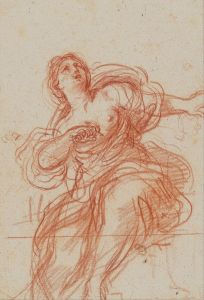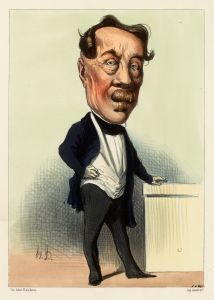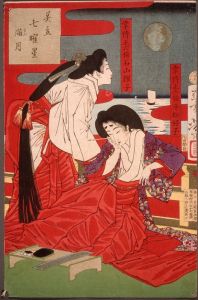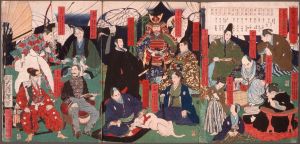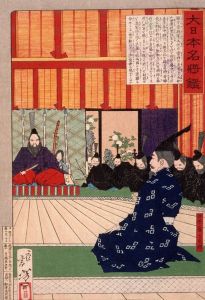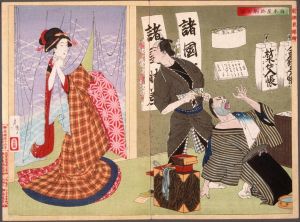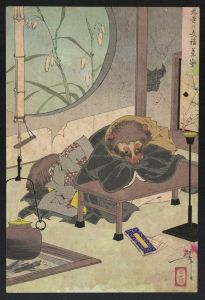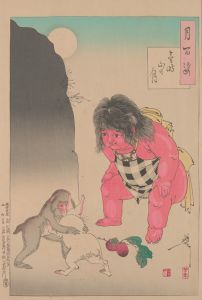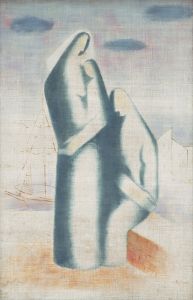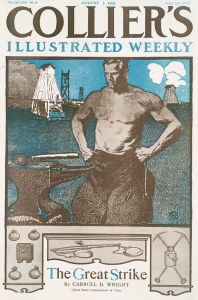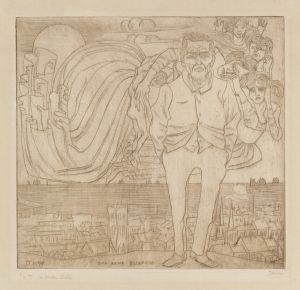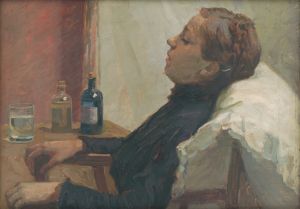
A Horrible Suicide; A Woman Slays Her Child then Kills Herself
A hand-painted replica of Tsukioka Yoshitoshi’s masterpiece A Horrible Suicide; A Woman Slays Her Child then Kills Herself, meticulously crafted by professional artists to capture the true essence of the original. Each piece is created with museum-quality canvas and rare mineral pigments, carefully painted by experienced artists with delicate brushstrokes and rich, layered colors to perfectly recreate the texture of the original artwork. Unlike machine-printed reproductions, this hand-painted version brings the painting to life, infused with the artist’s emotions and skill in every stroke. Whether for personal collection or home decoration, it instantly elevates the artistic atmosphere of any space.
Tsukioka Yoshitoshi (1839–1892) was a prominent Japanese ukiyo-e artist, known for his innovative and dramatic woodblock prints that often depicted historical, supernatural, and emotional themes. One of his works, titled A Horrible Suicide; A Woman Slays Her Child then Kills Herself (Japanese: Kashaku no zankoku), is part of his series Twenty-Eight Famous Murders with Verse (Eimei nijūhasshūku), created between 1866 and 1867. This series is notable for its graphic and often unsettling depictions of violent acts, reflecting both the Edo period's fascination with sensational stories and Yoshitoshi's skill in portraying intense emotion and psychological depth.
The print depicts a tragic scene in which a woman, driven by despair, kills her child before taking her own life. The exact historical or literary source of this particular image is not definitively known, but it aligns with the broader themes of the series, which often drew inspiration from kabuki theater, historical accounts, and popular literature of the time. The series as a whole explores the darker aspects of human nature and societal taboos, with each print accompanied by a short poem or verse that adds a layer of narrative or emotional context.
Yoshitoshi's work during this period is characterized by bold compositions, vivid colors, and a focus on the macabre. His ability to convey the psychological turmoil of his subjects is evident in this print, where the expressions and body language of the figures evoke a sense of tragedy and horror. The series was created during a time of significant social and political change in Japan, as the country transitioned from the Edo period to the Meiji era. This context may have influenced the themes of violence and upheaval present in Yoshitoshi's work.
While A Horrible Suicide; A Woman Slays Her Child then Kills Herself is a striking example of Yoshitoshi's early style, it is also reflective of the broader ukiyo-e tradition's engagement with dramatic and sensational subjects. However, the graphic nature of the series contributed to its controversial reception at the time. Despite this, Yoshitoshi's work has since been recognized for its artistic merit and its ability to capture the complexities of human emotion and experience.
Today, Yoshitoshi is regarded as one of the last great masters of the ukiyo-e tradition, and his works, including this print, are studied for their historical significance and artistic innovation. The print serves as a testament to his skill in merging traditional woodblock printing techniques with a modern sensibility that resonates with audiences even in contemporary times.





